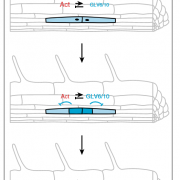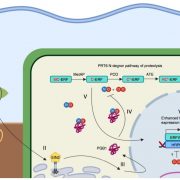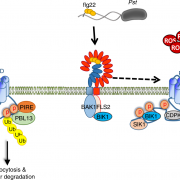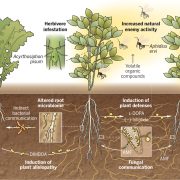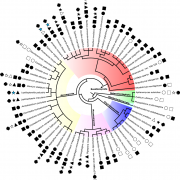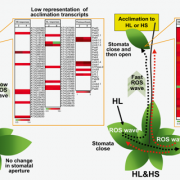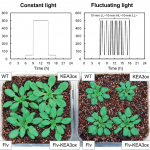HSL1 and BAM1/2 impact epidermal cell development by sensing distinct signaling peptides (Nature Comms)
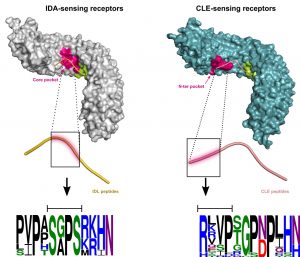 Cell-to-cell communication is crucial for coordinating plant immunity, development, and environmental adaptations. The main players in sensing signaling molecules are membrane receptor kinases such as Leucine Rich Repeat Receptor Kinases (LRR-RKs). In some cases these receptors detect peptide signals. INFLORECENT DEFICIENT ABCISION (IDA) and IDA-LIKE (IDL) are peptides sensed by the LRR-RKs HAESA (HAE) and HAESA-LIKE2 (HSL2) receptors. The LRR-RK BARELY ANY MERISTEM 1 (BAM1) and BAM2 are able to sense CLAVATA 3 (CLV3), a peptide which belongs to a family (CLAVATA3/EMBRYO SURROUNDING REGION-RELATED; CLE) that play important roles in many developmental processes. CLE peptides have a very similar sequence to IDA and IDL peptides. Previously, the interaction between CLE9 and HAESA/LIKE1 (HSL1) was shown to regulate the stomatal cell lineage development whereas the interaction between CLE9 and BAM1 regulates root xylem file number. In this work, Roman et al. describe that while CLE9 and IDA/IDL peptides are similar in terms of sequences, each peptide has its own specific and high affinity receptor, which are BAM1/2 and HSL1, respectively. Indeed, in leaf epidermal cell homeostasis, HSL1 and BAM1/2 may produce antagonistic results. Altogether, this works provides new insights in how the different specificities in ligand-receptor shape plant development. (Summary by Eva Maria Gomez Alvarez, @eva_ga96) Nature Comms. 10.1038/s41467-022-28558-4
Cell-to-cell communication is crucial for coordinating plant immunity, development, and environmental adaptations. The main players in sensing signaling molecules are membrane receptor kinases such as Leucine Rich Repeat Receptor Kinases (LRR-RKs). In some cases these receptors detect peptide signals. INFLORECENT DEFICIENT ABCISION (IDA) and IDA-LIKE (IDL) are peptides sensed by the LRR-RKs HAESA (HAE) and HAESA-LIKE2 (HSL2) receptors. The LRR-RK BARELY ANY MERISTEM 1 (BAM1) and BAM2 are able to sense CLAVATA 3 (CLV3), a peptide which belongs to a family (CLAVATA3/EMBRYO SURROUNDING REGION-RELATED; CLE) that play important roles in many developmental processes. CLE peptides have a very similar sequence to IDA and IDL peptides. Previously, the interaction between CLE9 and HAESA/LIKE1 (HSL1) was shown to regulate the stomatal cell lineage development whereas the interaction between CLE9 and BAM1 regulates root xylem file number. In this work, Roman et al. describe that while CLE9 and IDA/IDL peptides are similar in terms of sequences, each peptide has its own specific and high affinity receptor, which are BAM1/2 and HSL1, respectively. Indeed, in leaf epidermal cell homeostasis, HSL1 and BAM1/2 may produce antagonistic results. Altogether, this works provides new insights in how the different specificities in ligand-receptor shape plant development. (Summary by Eva Maria Gomez Alvarez, @eva_ga96) Nature Comms. 10.1038/s41467-022-28558-4


